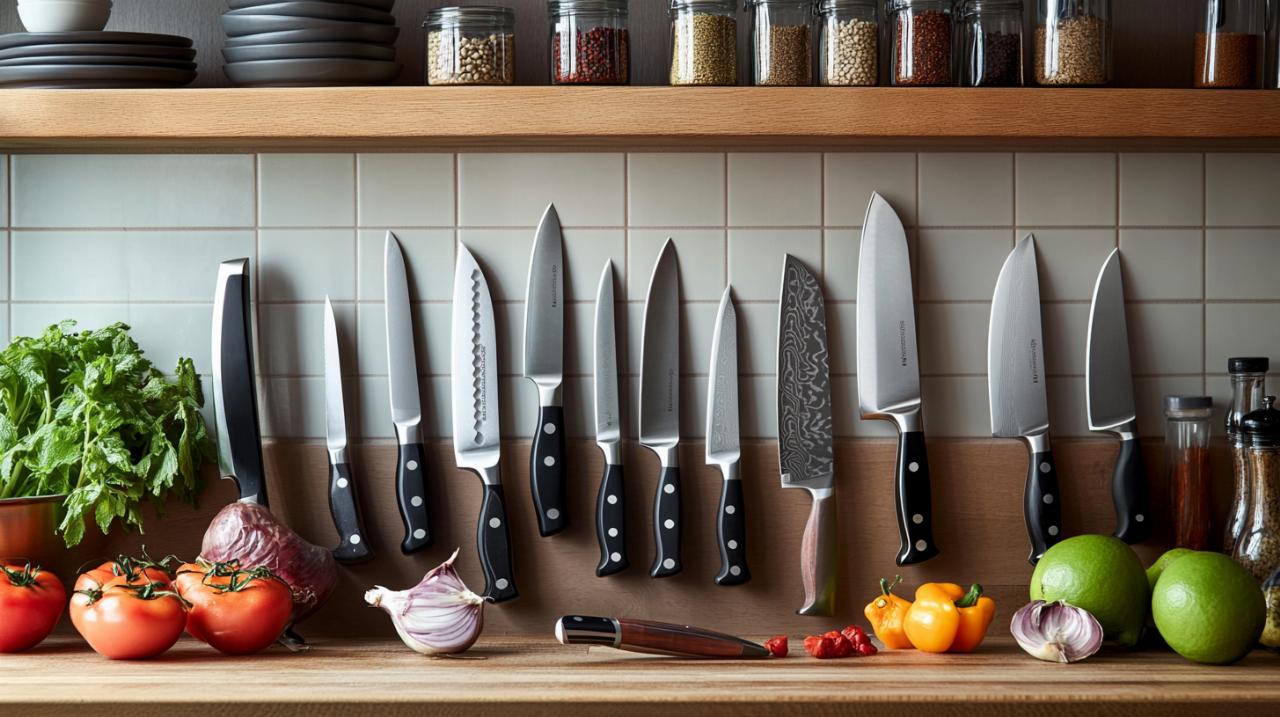When it comes to equipping a kitchen with the right tools, few investments prove as essential as selecting a reliable collection of blades. The difference between a frustrating cooking experience and an enjoyable culinary journey often hinges on the quality and characteristics of the implements at hand. Understanding how various elements come together to create a truly effective set requires looking beyond surface aesthetics and delving into the engineering principles that underpin exceptional craftsmanship.
Performance analysis: cutting edge excellence in premium knife collections
Blade sharpness retention and material composition
The foundation of any exceptional blade lies in the steel from which it is forged. High-carbon stainless steel represents the gold standard in contemporary knife manufacturing, combining the edge retention properties of carbon steel with the corrosion resistance that stainless alloys provide. When examining a particular German-manufactured collection, one finds blades crafted from this superior material, achieving a hardness rating of fifty-seven on the Rockwell scale. This measurement indicates a carefully calibrated balance between durability and the ability to maintain a keen edge over extended periods of use.
What truly distinguishes premium collections from their more modest counterparts is the incorporation of advanced metallurgical processes. The FRIODUR ice-hardening technology employed in certain German sets subjects the steel to extreme cold treatment, fundamentally altering its molecular structure. This process enhances both the blade's resistance to corrosion and its capacity to withstand the rigours of daily kitchen tasks without losing its sharpness. The fifteen-degree cutting angle further contributes to the blade's effectiveness, creating a fine edge that glides through ingredients with minimal resistance.
Professional testing conducted across various food types consistently demonstrates the practical benefits of these technical specifications. When assessing knife set performance and technical balance, evaluators note how blades slice through onions without crushing cells that release tear-inducing compounds, carve through dense butternut squash with controlled precision, and produce paper-thin apple slices without tearing the fruit's delicate flesh. The extended intervals between necessary sharpenings represent a significant practical advantage, reducing maintenance demands whilst maintaining consistent cutting quality.
Ergonomic design and handling characteristics
The relationship between blade and handle represents a critical yet often overlooked aspect of knife design. Full tang construction, where the blade metal extends through the entire length of the handle, provides both structural integrity and optimal weight distribution. In well-engineered collections, this design principle ensures that the implement feels like a natural extension of the hand rather than a separate tool requiring conscious manipulation.
The ergonomic handle design found in quality German sets typically measures approximately thirteen centimetres on the main chef's knife, a dimension carefully calculated to accommodate a range of hand sizes whilst providing secure grip during extended use. The handle's contours guide the fingers into proper position, reducing fatigue during lengthy preparation sessions and minimising the risk of accidents caused by slippage or awkward positioning. This thoughtful design consideration proves particularly valuable when performing repetitive tasks such as cutting carrot batons or preparing large quantities of ingredients.
Comfort assessments conducted by panels of users consistently highlight the importance of handle design in overall satisfaction. Tasks ranging from peeling apples with a paring knife to slicing bread with a serrated blade demonstrate how proper ergonomics translate into both increased efficiency and reduced physical strain. The multi-purpose scissors included in comprehensive sets extend these ergonomic principles beyond knife design, providing versatile functionality for tasks ranging from trimming herbs to breaking down poultry.
Technical specifications: engineering precision behind superior knife craftsmanship

Steel grade selection and heat treatment processes
The journey from raw steel to finished blade involves numerous technical decisions that ultimately determine the implement's performance characteristics. High-carbon stainless steel combines approximately one per cent carbon content with chromium and other alloying elements, creating a material that resists rust whilst maintaining the hardness necessary for edge retention. The specific composition employed in German manufacturing reflects decades of metallurgical refinement, balancing competing properties to achieve optimal results.
Heat treatment processes represent the transformative stage where good steel becomes exceptional. Traditional methods involve heating the blade to specific temperatures followed by controlled cooling, but advanced techniques such as FRIODUR ice-hardening take this process several steps further. By subjecting the steel to temperatures well below freezing, manufacturers achieve a more uniform crystalline structure throughout the material. This enhanced consistency translates directly into improved durability and corrosion resistance, properties that prove invaluable in the demanding environment of a busy kitchen.
The Rockwell hardness rating of fifty-seven positions these blades in an ideal range for kitchen use. Harder steel maintains its edge longer but becomes more brittle and difficult to sharpen, whilst softer steel dulls quickly despite being easier to maintain. This carefully calibrated hardness ensures that users can maintain their blades with standard sharpening stones and honing rods without requiring professional equipment, whilst still enjoying extended periods of optimal performance between maintenance sessions.
Balance point distribution and weight engineering
The concept of balance in knife design extends beyond mere aesthetics to fundamental functionality. The balance point of a properly engineered blade typically falls just forward of where the blade meets the handle, creating a pivot point that allows for controlled chopping motions whilst minimising wrist strain. Full tang construction proves essential to achieving this distribution, as it ensures that weight is not concentrated exclusively in the blade portion of the implement.
In comprehensive sets comprising six main components with a total weight of approximately seven hundred grammes, each piece contributes to a cohesive collection designed for specific tasks. The twenty-centimetre chef's knife serves as the workhorse for most cutting operations, whilst the paring knife handles delicate work requiring precision. The fillet knife's flexibility proves invaluable when working with fish or thin cuts of meat, and the carving knife's length facilitates clean slicing of roasted joints. This thoughtful composition ensures that cooks have appropriate tools for the full spectrum of culinary tasks.
The knife block itself reflects similar attention to engineering principles, standing forty centimetres high with a base measuring thirty-four by twelve centimetres. This footprint provides stable storage without monopolising valuable worktop space, whilst the block's design protects blade edges from damage during storage. The integration of these components into a cohesive system demonstrates how technical excellence extends beyond individual implements to encompass the entire collection.
Comparisons with premium brands such as Miyabi, Fissler, KitchenAid, and Ninja Kitchen reveal that whilst luxury names may command prices three times higher, the performance improvements rarely justify such expenditure for home cooks. German manufacturing standards ensure rigorous quality control throughout production, backed by comprehensive warranty provisions and responsive customer support. Periodic discounts of around forty per cent combined with free shipping for qualifying orders enhance the value proposition, positioning these technically accomplished collections as sensible investments that deliver professional-grade performance without the premium brand surcharge.




